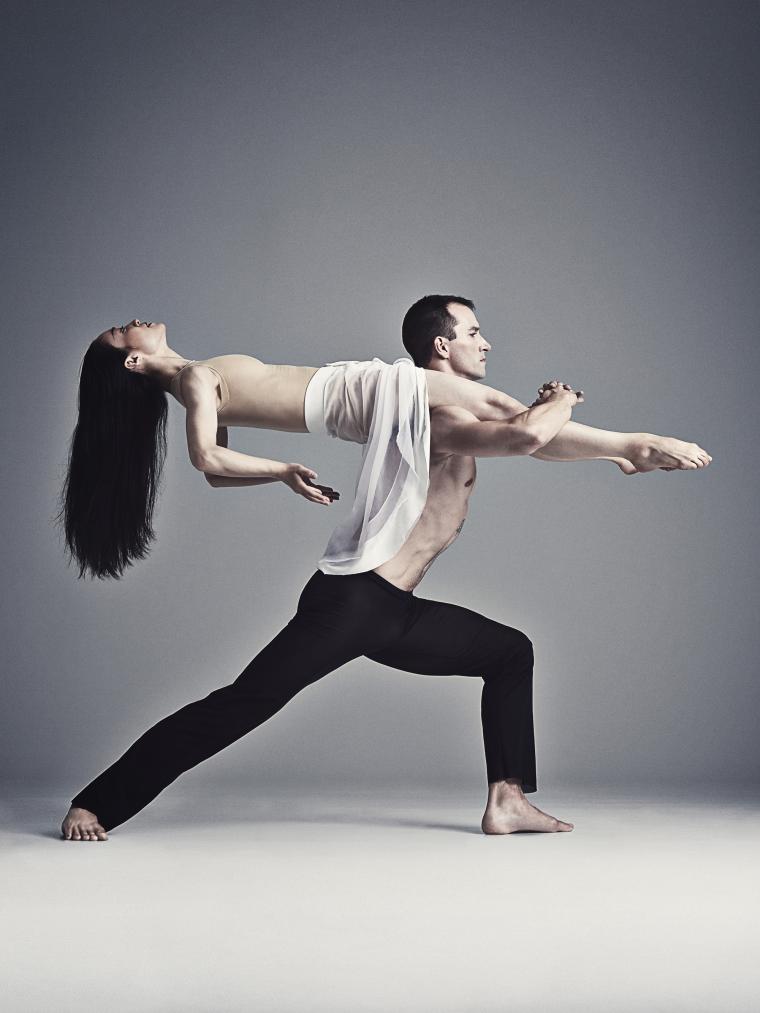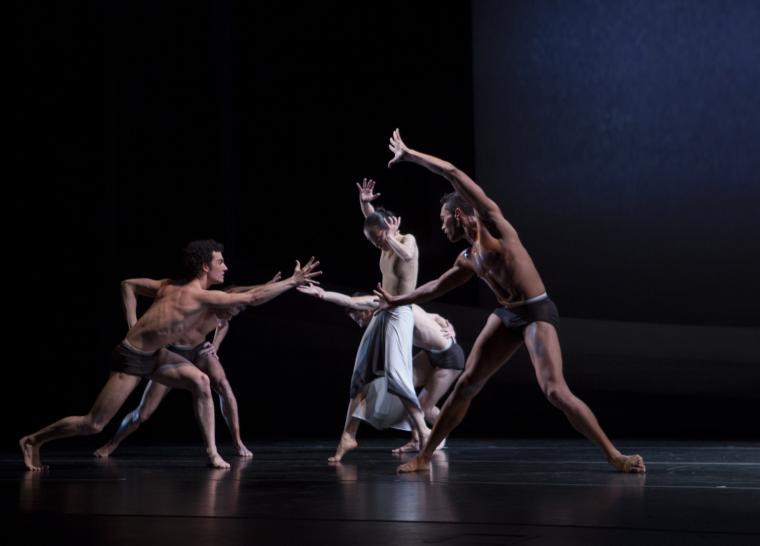Martha Graham Revisited
Camille LeFevre on the raw violence and emotional candor of Martha Graham's dance, on view in the repertory and new works presented by the Martha Graham Dance Company recently in Minneapolis.

Spring always brings to mind the almost unfathomable amount of cellular force necessary for plants—from the tiniest crocus bulb to the towering, leafless trees—to defy gravity and grow upward, out of the ground and toward the sun, toward life. We enjoy the manifestations of this invisible strength, compulsion and need: sprouts forcing the earth to part, flowers unfolding on top of moist green stems, leaves unfurling in that springtime shade of lime green. But who could not have sensed that same sort of kinetic energy when the Martha Graham Dance Company performed Graham’s propulsive, shattering, 1984 version of The Rite of Spring, set to Stravinsky’s score, last weekend at Northrop?
All of the thrust, force, contortion, and upheaval currently occurring underground in our yards and gardens were laid bare in the muscular bodies of the dancers as they enacted the violence of the primal, sacrificial rite that’s been haunting dance goers since Sergei Diaghilev‘s Ballets Russes—with choreography by Nijinsky and score by Stravinsky—premiered the original in 1913. Diaghilev’s production caused outrage and near riots. But Graham’s version, which she choreographed at the age of 89, has a raw violence that’s unparalleled.

From the moment Ben Schultz, as The Shaman, appears in his black-and-white cloak against an aggressive slash of black across gray background, we’re transfixed. His command is total. The dancers around him swoop and churn in observance, with innocence. And then he plucks one young woman from the back of her partner, which she has up to that moment been blissfully riding to safety. For a brief moment, she barely knows she’s hanging mid-air, but then realizes with horror the meaning: she’s The Chosen One (Blakeley White-McGuire), the sacrificial victim. And so the ritual begins.
They’re a dramatic pair: Schultz—muscular, taut, as sturdy as a pylon, his torso and upper back arrayed with gothic tattoos; White-McGuire—petite, weightless, easily tossed about and wrapped around Schultz’s shoulders. She acquiesces. She thrashes in frenzies of fear. She’s raped. She implores. She attempts escape. But The Shaman and his equally strapping henchmen pen her in, with their hammering heels, slapping hands, bolting arms, torqued leaps and twisting torsos.
With that, the company concluded the evening, not with a whimper but a bang. Although the first half of the program hardly indicated it would be so. Friday evening’s performance opened with a history lesson delivered with humor and eloquence by Janet Eilber, a former principal dancer with the company and its artistic director since 2005. Eilber’s approach, since taking the helm, has been to advance understanding of Graham’s work and take the choreographer’s formidable influence—as a premier innovator of 20th century modern art and dance—into the future.

So Eilber introduced Prelude and Revolt, a series of works demonstrating how Graham “got from here to there,” as she explained. There was archival film footage of Denishawn dancers, and the company performed a montage of three Denishawn-style solos that Graham—who danced in the company created by Ruth St. Denis and Ted Shawn in the early 1900s—might have performed or been influenced by. These were simple “Orientalist” works demonstrating Shawn and St. Denis’ obsession with “the exotic.”
A soloist, Dani Stinger, performed Serenata Morsica, which Graham performed on Denishawn tours and with the Greenwich Village Follies; it’s a saucy little number of the sort Graham soon tired of. The proof is the 1930 Lamentation, Graham’s iconic solo of primal grief, which she performed while encased within a single piece of stretchy fabric while sitting on a bench. Peiju Chien-Pott rendered the work with haunting angles, curves, and retreat within a fabric enclosure that both resists and restrains.
Graham’s political astuteness found expression in the 1935 Panorama, performed by students from the University of Minnesota Dance Program. Against a blue background, the dancers swarmed the stage in red tunics and pants. Moving in regimented lines like knife slashes or surging. mob-like pools of blood, they filled the stage with thrilling urgency.
The program continued Lamentation Variations, one of Eilber’s initiatives to extend Graham’s legacy with new works. The piece began with a film of Graham performing her original work, which in many ways rendered Chien-Pott’s early live performance moot. Seeing Graham’s aging hands twisting beneath her fabric enclosure, and her angular face in close up beneath her hood of grief, conveyed all we needed to know—or remember—about Graham’s singular mode of performance.
Three variations, current work inspired by Lamentation, followed. Michelle Dorrance’s 2015 piece was a bustling cityscape of dancers walking in precise patterns, disconnected from one another, around a men’s trio at the center of the stage. Flanked by the presence of two dancers on either side of him, the man in the middle moved with sudden gestures of lament and loneliness while encased in living container of grief. The work was a poignant reminder of isolation within a crowd, of the solitary nature of deep emotion in a sea of humanity.
The second variation, by Kyle Abraham, also created in 2015, was a delicate duet for two women. Here, grief finds gentle support in the touch of an arm, in reliance on another body, as a form of reprieve from pursuing freedom and separation. In his 2007 variation, however, Larry Keigwin externalizes and sensationalizes the profound emotions for which Graham and Lamentation are known. The dancers preen as if in front of a mirror, touching their hands to their faces as if examining the marks of imperfection and aging. Their hands meet in prayer and tremble, as if pleading with a vengeful Narcissus to help them regain their youth. One dancer lifts her hair up on end; a too-obvious manifestation of what Graham conveyed as pure emotion.
It’s one lamentation too many, portraying rituals of excessive and erotic self-involvement with which—individually and as a culture—we’re too enraptured for our own good.
But then again, perhaps that’s Keigwin’s point: That narcissism is no longer mythological and thus a source for artistic innovation, but rather a condition of our selfie-, celebrity-, and appearance-obsessed culture. A culture in which the depth and integrity of Graham’s work is more important than ever.
Noted performance information:
Martha Graham Dance Company performed at Northrop in Minneapolis, April 10 and 11, 2015.
Camille LeFevre is a long-time dance writer in the Twin Cities and the editor of The Line, an online publication about the creative economy of the Twin Cities.